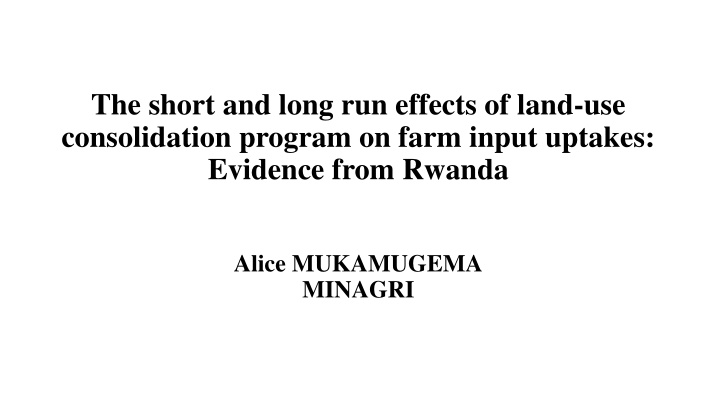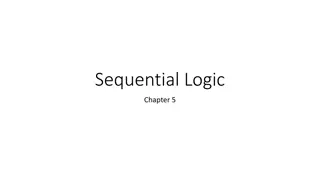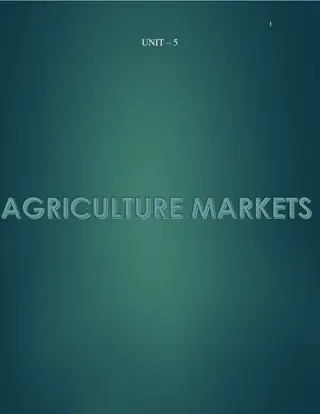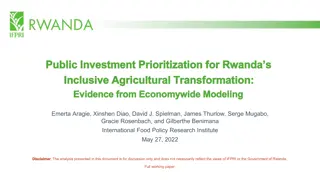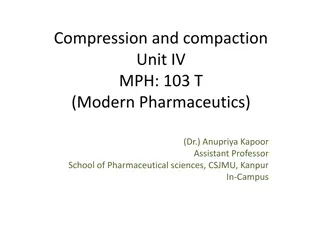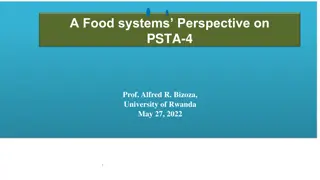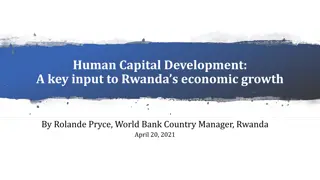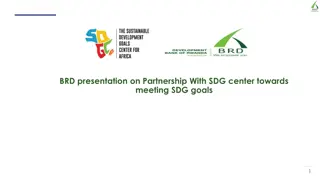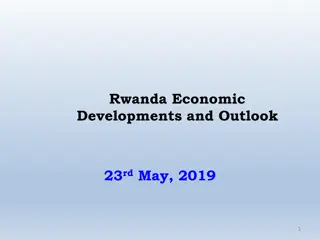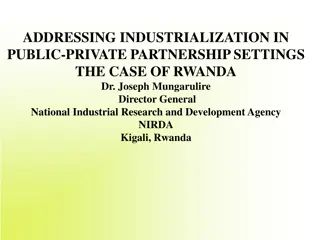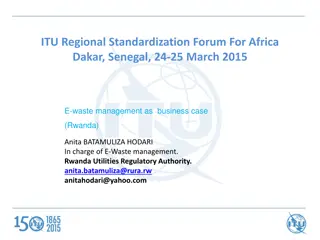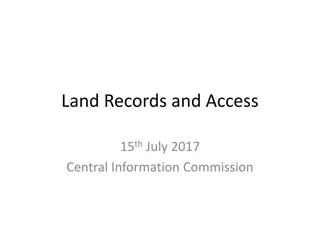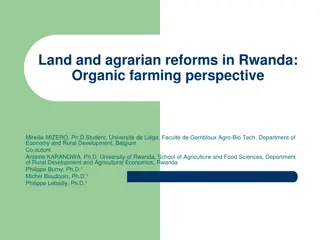Impact of Land-Use Consolidation Program on Farm Inputs in Rwanda
The study evaluates the effects of Rwanda's land-use consolidation program on farm input uptakes, specifically focusing on hybrid seeds, inorganic fertilizers, and pesticides. Results show significant increases in the adoption of hybrid seeds and inorganic fertilizers among participating households compared to non-participants. The findings suggest that the program has positively influenced agricultural productivity and the uptake of improved farm inputs, enhancing farm sustainability in Rwanda.
Download Presentation

Please find below an Image/Link to download the presentation.
The content on the website is provided AS IS for your information and personal use only. It may not be sold, licensed, or shared on other websites without obtaining consent from the author.If you encounter any issues during the download, it is possible that the publisher has removed the file from their server.
You are allowed to download the files provided on this website for personal or commercial use, subject to the condition that they are used lawfully. All files are the property of their respective owners.
The content on the website is provided AS IS for your information and personal use only. It may not be sold, licensed, or shared on other websites without obtaining consent from the author.
E N D
Presentation Transcript
The short and long run effects of land-use consolidation program on farm input uptakes: Evidence from Rwanda Alice MUKAMUGEMA MINAGRI
Introduction In 2008, the Rwanda government under the Crop Intensification Programme (CIP) implemented a national land use consolidation program, to address the burgeoning problem in the agricultural sector. The aim of the program was to consolidate farmlands, promote crop specialisation, and hence enhance farm productivity The beckoning question is whether the land use consolidation program has improved agricultural productivity, the dimensions of food security and uptake of improved farm inputs. This study examined how the land use consolidation program impacted farm holder s decision to adopt improved inputs (hybrid seed, fertilisers and pesticides) and agricultural practice (i.e. irrigation).
Methodology The approach of the difference-in-differences approach The study compares participants and non-participants in the programme who share similar observable covariates Different fixed effects were controlled ; Primary Sampling Units, year of survey and district fixed effects to account for the unobserved factors Longitudinal data from Integrated Household Living Conditions surveys of Rwanda (EICV2, 3& 4) used. Total sample consisted of 5,280 rural households from EICV2 (2005/06), 12,159 rural households from EICV3 (2010/11) and 11,836 rural households from EICV4 (2013/14) To examine the role of LUC on the farm inputs use, Linear Probability Model (LPM) was used
4. Results and discussions 4.1.Effects on Hybrid seeds use LUC policy and adoption of hybrid seeds LUC policy Households participating in land-use consolidation program were 9.2, 9.5 and 8.6 percentage points more likely to adopt hybrid seeds than non-participant households, in general in the short-run and long-run, respectively LUC with farm loan LUC with wage/salary Households participating in the program while having a farm loan had higher adoption rates of hybrid seeds by 5.7, 11.3 and 9.3 percentage points than those participating without a farm loan, in the short-run, long-run and in general, respectively. LUC with livestock -.1 -.05 0 .05 .1 .15 EICV2&3 EICV2&4 Pooled
4.2. Effects on Inorganic Fertilizer Use LUC policy & adoption of inorganic fertilizer Participation in land-use consolidation program increased the probability to adopt inorganic fertilizer by 20.5 percentage points, in general LUC policy LUC with farm loan LUC with wage/salary 18.1 percentage points in short- run LUC with livestock 21.4 percentage points in the long-run -.1 0 .1 .2 .3 EICV2&3 EICV2&4 Pooled
4.3. Effects on Pesticides use LUC policy and adoption of pesticides 11.1 percentage points more likely to adopt, in general LUC policy LUC with farm loan 8.1 percentage points more likely to adopt, in short-run LUC with wage/salary 12.7 percentage points more likely to adopt, in the long-run LUC with livestock -.2 -.1 0 .1 .2 EICV2&3 EICV2&4 Pooled
4.4. Effects on Farm Irrigation use LUC policy and adoption of farm irrigation LUC policy The land irrigation practice increased by around 2.6 percentage point under LUC program LUC with farm loan LUC with wage/salary LUC with livestock -.04 -.02 0 .02 .04 EICV2&3 EICV2&4 Polled
LUC influence on households welfare the study assessed the relationship between the per capita land size of specific CIP crops, namely maize, beans and potatoes, and their yield. In the majority of the districts, maize yield has increased with the land-use consolidation program. Likewise, the beans yield in the majority of the districts has increased with the program over the years. Potato yield has increased with the program only in few districts
1 Effects on Household farm income Cumulative Probability household income, especially in the short-run .8 .6 The Cumulative Density Function CDF plot shows an increase in farm .4 .2 0 0 200000 400000 600000 Real farm household income expressed in Rwandan francs 2005/06 2010/11 2013/14
